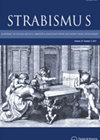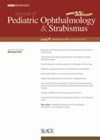Surgery for myopic strabismus
The outcomes are reported of muscle belly union technique with medial rectus recession for cases with restriction according to the results of intraoperative forced duction testing (FDT). Surgery involved isolation of the lateral and superior recti muscles, which were separated,...
Horizontal angles in Brown’s syndrome
The purpose of this study was to determine the incidence of horizontal strabismus needing surgical management in Brown’s syndrome. This was a retrospective review of 19 eyes (eight right and 11 left) of 16 patients (seven male and nine female)....
Surgical outcomes after trauma-induced cataract extraction
This study evaluated outcomes in children aged less than eight years with corneal laceration and traumatic cataract who had cataract extraction one to eight weeks after primary corneal wound repair. This was a retrospective study of 47 eyes of 47...
Amblyopia treatment
This study was conducted to assess practice preferences in the management of amblyopia among paediatric ophthalmologists. A close-ended multiple choice questionnaire consisting of 10 questions was circulated to 113 paediatric ophthalmologists and fellows of which 74 completed the questionnaire. Seventy-six...
Postop esotropia re-drift
The authors aimed to investigate the rate and onset of development of re-drift after infantile esotropia surgery and identify factors associated with this. This was a retrospective study of 112 patients with a mean postoperative follow-up of 9.5 years. Consecutive...
Assessing and treating achromatopsia
This literature review considers clinical characteristics (pendular nystagmus, poor visual acuity, lack of colour vision and marked photophobia), genetics (autosomal recessive disease, with CNGA3, CNGB3, GNAT2, PDE6C, PDE6H and ATF6 gene mutations), diagnostic options (OCT and fundus auto fluorescence), and...
Wrong-site surgery
A survey was undertaken with paediatric ophthalmologists to assess a set of factors that influence the risk of wrong-site surgery. The survey specifically considered the preoperative marking process and time-out procedure. It looked at factors included or not included in...
Infantile vertical nystagmus
The authors describe the clinical characteristics and long-term outcomes of infants who presented with isolated vertical nystagmus in infancy, age-appropriate visual behaviours and unremarkable neuroimaging studies. The study included eight patients presenting at <1-year-old. All had age-appropriate behaviour. At presentation...
OCT in microtropia
The aim of this study was to assess whether OCT could be useful in detecting and documenting fixation in children with microtropia. The study used spectral domain OCT (Cirrus) in 15 patients (10 female, five male) and 10 control eyes....
Screening for amblyopia
The purpose was to determine the validity of the OPTEC 5500 vision screener in detecting visual acuity and amblyopia in paediatric patients aged 3-17 years with comparison to the Lea and Snellen tests. This was a cross-section study of 64...
Screening with PlusoptiX
This study compared the PlusoptiX A12 to a comprehensive ophthalmic investigation. This was a three-month study of 219 (438 eyes) subjects with a mean age of 72 months. The A12 referred 101 of 219 (46%) patients for potential amblyopia. Ophthalmic...
D-EYE device versus direct ophthalmoscope
D-EYE digital ophthalmoscope is a fundus camera device that attaches to a smartphone and is used in conjunction with a HIPAA-compliant app. The authors conducted a study in which 25 medical students examined the fundi of two undilated patients with...







